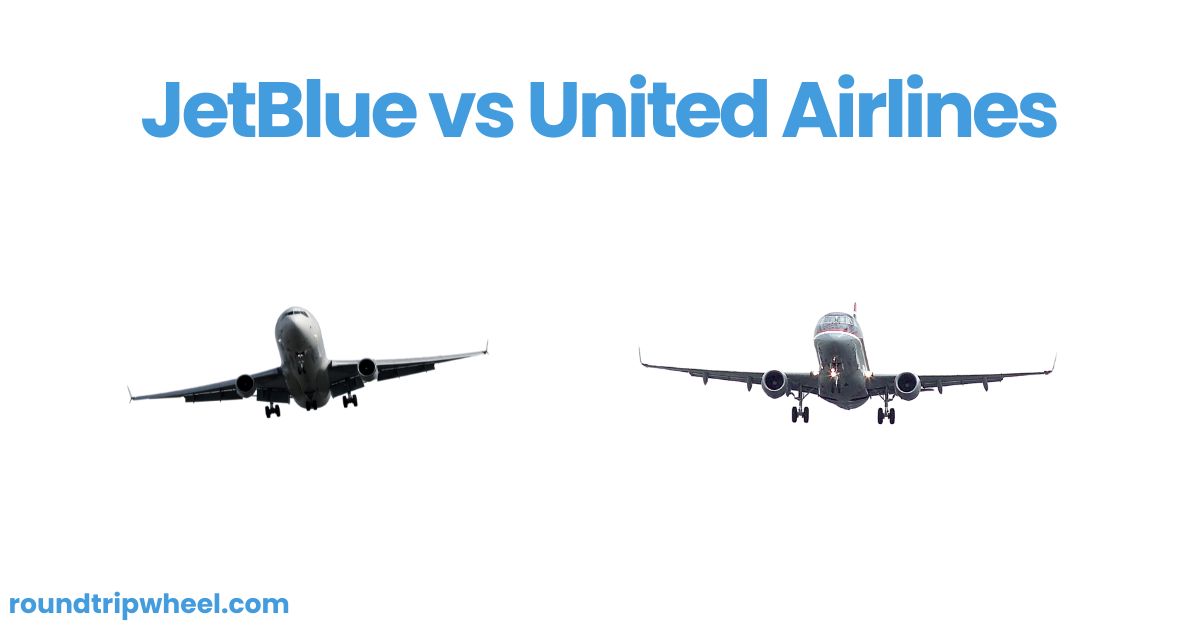JetBlue vs United Airlines: A Comprehensive Comparison

When it comes to choosing an airline for your travel needs, the options can be overwhelming. Two prominent players in the US aviation industry are JetBlue Airways and United Airlines. While JetBlue is known for its affordability, comfort, and customer-friendly approach, United boasts a global presence and a rewarding loyalty program. In this article, we’ll dive deep into various aspects of these airlines, helping you make an informed decision for your next journey.
Classes and Fares
Both JetBlue and United offer multiple classes and fare options to cater to diverse traveler preferences.
JetBlue has five fare options: Blue Basic, Blue, Blue Extra, Blue Plus, and Mint. The first four fall within the Economy cabin, each offering different perks, while Mint is JetBlue’s premium cabin experience, featuring lie-flat seats and a host of amenities.
United, on the other hand, provides seven different fare classes: Basic Economy, Economy, Economy Plus, United Premium Plus, Business Class, First Class, and Polaris Business Class (for long-haul international flights). United’s premium options cater to a broader range of budgets, offering more flexibility and additional perks like extra legroom, plusher seating, and premium amenities.
Destinations and Route Network
When it comes to destinations, United Airlines has a clear advantage with its extensive global network. With more than 800 aircraft flying to over 340 destinations on every continent except Antarctica, United caters to travelers seeking a wide range of international and domestic destinations.
JetBlue, being a relatively younger airline, primarily focuses on domestic routes within the contiguous United States, with some international flights to Mexico, the Caribbean, South America, and London. While its network is more limited, JetBlue has a significant presence on the East Coast, particularly in New York.
Changes, Cancellations, and Baggage Policies
Both airlines have distinct policies regarding ticket changes, cancellations, and baggage allowances.
JetBlue offers free ticket changes and cancellations on all fare types except Blue Basic. For Blue Basic fares, changes and cancellations incur a fee ranging from $100 to $200, depending on the route. JetBlue also provides a 24-hour refund window for cancellations made within seven days of departure.
United Airlines recently introduced no change fees for most of their fare classes, excluding Basic Economy. For Basic Economy tickets, cancellations within 24 hours of booking are refundable, but outside that window, a fee of $49.50 to $199 applies.
Regarding baggage allowances, JetBlue guarantees that on all domestic routes, carry-on bags for Blue and above fares will fit on the plane, or passengers will receive a $25 credit. Additionally, Mosaic members (JetBlue’s loyalty program) fly with a free carry-on bag and up to two free checked bags on every flight, regardless of the fare type.
United’s baggage allowances differ depending on the flight route and fare. Basic Economy tickets only include one personal item, while higher fare classes allow for a personal item and a carry-on bag. Premium cabin passengers also receive priority baggage handling and additional checked bag allowances.
In-Flight Experience
Both airlines strive to provide a comfortable and enjoyable in-flight experience, but their approaches differ.
Seat Comfort and Legroom:
JetBlue is renowned for its generous legroom, offering 32-34 inches of pitch in Economy class, significantly more than the industry standard. Additionally, passengers can upgrade to Even More Space seats for extra legroom and early boarding privileges.
United, on the other hand, offers 31 inches of legroom in Economy class, meeting the industry standard. However, upgrading to Economy Plus or Premium Plus provides up to 37 inches of legroom. United’s premium cabins, such as Polaris Business Class, offer flatbed seats with privacy dividers for added comfort.
In-Flight Entertainment and Connectivity:
JetBlue excels in this area, providing seatback entertainment systems with live TV and complimentary Wi-Fi on every flight. This feature sets JetBlue apart from many other domestic airlines.
United is catching up, retrofitting many of its older planes to include seatback entertainment systems. However, not all United flights currently offer seatback TVs or Wi-Fi, although the airline plans to improve this in the coming years.
Food and Beverages:
Both airlines offer complimentary snacks and drinks in Economy class, with JetBlue providing unlimited snacks on every flight. However, JetBlue’s premium Mint cabin offers first-class dining that ranks among the best in the US airline industry.
United’s food and beverage offerings vary depending on the fare class and route. Premium cabin passengers receive upgraded dining options, with United Polaris offering a welcome beverage, pre-meal drinks, and mid-flight meals on longer flights.
Loyalty Programs
Frequent flyers often consider an airline’s loyalty program when choosing their preferred carrier.
JetBlue’s TrueBlue program allows members to earn and use points without blackout dates. While points have a lower value compared to United’s program, JetBlue offers various ways to earn and redeem points, as well as the ability to share points with fellow members.
United’s MileagePlus program is considered one of the best in the industry. Members can earn and redeem miles on United flights, as well as with Star Alliance partners. The program offers a broad range of redemption options, including upgrades, hotels, and TSA PreCheck fees. While miles have a higher value, there are fees for transferring and buying miles.
Reliability and Safety
While both airlines strive for punctuality and safety, their performance varies.
According to a 2022 study by WalletHub, United ranked higher than JetBlue in terms of reliability, with a score of 26.67 points compared to JetBlue’s 16.52 points. However, both airlines have experienced their share of delays and cancellations, prompting them to cut some routes to improve overall reliability.
In terms of safety, neither JetBlue nor United ranks among the top five airlines globally, but United scored slightly higher than JetBlue in the WalletHub study, with 19.42 points compared to JetBlue’s 17.89 points.
Credit Cards
Both airlines offer co-branded credit cards with various benefits and perks.
JetBlue offers two personal credit card options: the JetBlue Card and the JetBlue Plus Card. While the JetBlue Card has no annual fee, the JetBlue Plus Card ($99 annual fee) provides additional benefits like a free checked bag, earning 6X points on JetBlue purchases, and the potential to earn Mosaic Status with a specific spending threshold.
United has four personal credit card options, ranging from the United Gateway Card (no annual fee) to the United Club Infinite Card, which offers United Club access and various travel benefits for a $550 annual fee. Cardholders can enjoy perks like free checked bags, Global Entry/TSA PreCheck credits, and bonus miles on United purchases.
The Bottom Line: Which Airline Should You Choose?
Choosing between JetBlue and United ultimately depends on your travel needs, preferences, and budget.
If you prioritize affordability, generous legroom, and a comfortable in-flight experience with free Wi-Fi and entertainment, JetBlue may be the better choice, especially for domestic travel. Additionally, JetBlue’s premium Mint cabin offers an unparalleled lie-flat experience for transcontinental flights.
On the other hand, if you value a global route network, earning and redeeming miles with Star Alliance partners, and accessing airport lounges, United Airlines may be the more suitable option. United’s premium cabins, such as Polaris Business Class, also provide a luxurious international travel experience.
Frequent travelers with loyalty to either airline’s reward program may find it advantageous to stick with their preferred carrier to maximize benefits and earn elite status.
Ultimately, both JetBlue and United have their strengths and weaknesses. By considering factors like destinations, in-flight experience, loyalty programs, and overall value, you can make an informed decision that aligns with your travel preferences and budget.

About Author
Hey there, fellow explorers! I’m Mark Rodriguez, a big fan of adventures and always hungry for more. Packed with stories and a trusty camera, I’m on a mission to explore cool places around the world.
I love diving into new cultures and landscapes. As a travel writer, my goal is to get you excited about stepping out of your comfort zone, trying new things, and discovering the awesome magic our world has.
Check out my blog for cool stories, travel ideas, and helpful tips to plan your own amazing getaway!



